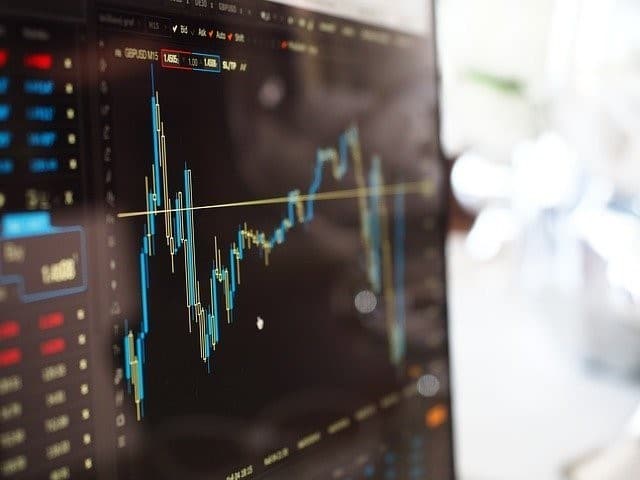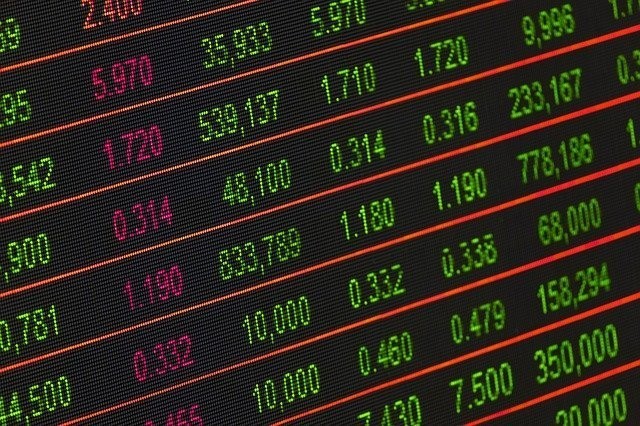29th Dec 2021

Today’s financial markets are more complex and diversified than ever before. Beyond traditional stocks and bonds, there are now so many more vehicles available to investors — mutual funds, futures, derivatives commodities, securities, and much more.
A relative newcomer to the scene — officially appearing first in the 1990s — Exchange-Traded Funds, more commonly known as ETFs, have become widely popular for investors of all types.
But while you may have heard the term “ETF” tossed around, have you ever stopped to ask, what is an ETF?
Understanding what an ETF is, how it works, and why it’s a worthwhile method of investing, makes you a more informed investor. And as a rule, more informed investors make more money.
Even if you’re working with a professional advisor, the more you know about what’s available to you the better. Building your own knowledge allows you to ask the right questions and explore the right hunches on your own.
For those who are new to ETFs, here’s everything you need to know. Let’s talk about the good, the great, and the not-so-good elements of these investments.
What is an ETF?

ETF means “Exchange-Traded Fund.” In a sentence, it’s a type of investment that allows investors to put their money into a number of different companies at once, spending less money and taking on relatively less risk.
For some, it might be helpful to think of an ETF as a mutual fund whose shares are bought and sold via a different process. As the ‘E’ in ETF suggests, ETFs are traded in exchanges.
Need a refresher on mutual funds to better understand ETFs? Here you go:
What’s the Difference Between an ETF and a Mutual Fund?
In short, a mutual fund is an investment vehicle in which money is pooled from a number of different people and then invested into multiple places. The things that a fund invests in are called “assets” and they come in many forms. A mutual fund’s assets might include the stocks of public companies, government bonds, investment in commodities like fuel sources, etc.
To join the mutual fund, you must purchase “shares,” which represent partial ownership of the fund’s assets. The investment bank that runs the fund manages this process. So, if you’re interested in a mutual fund managed by Charles Schwab, you must contact Charles Schwab to get some shares.
As the overall value of the fund increases over time, each share grows at the same rate. If you need to use that money for something else, you have to sell the share.
Imagine that you bought a share of a mutual fund for $1,000 and over time its value grew to $2,000. Selling the share would get you $2,000. That’s your original $1,000 plus another $1,000 in profit. Of course, now that you don’t own the share any more, it can’t earn you any more money.
Mutual funds are usually actively managed meaning that assets within the fund are bought or sold in an attempt to beat the market. In contrast ETFs are usually, though not exclusively, passively managed, i.e. they track an index.
What Are Exchange-Traded Funds?
An ETF functions in exactly the same way as a mutual fund, with one major exception: ETF shares are traded on exchanges. They can be bought and sold as if they were stocks.
What this really means is that they are easier to buy and sell. Instead of having to go to the bank that’s managing the fund, you simply purchase shares off the relevant exchange market, and then you’re done.
Because of the different ways ETFs are designed and traded, they also fall into a different tax category and are usually cheaper to own than mutual funds. We’ll explore these two main differences in further detail when we discuss the advantages of ETFs.
What Are the Different Types of ETFs?

Since ETFs are simply a collection of investments, there is pretty much no limit to the number of different types of ETFs.
Some of the first ETFs were created to track stock indexes, such as the S&P 500. An Index is a financial metric that makes it easy to monitor the performance of a group of investment assets. An ETF that follows the S&P 500 would divide its money between many companies that belong to that index.
This type of investment is called a “Stock ETFs” because it invests in a number of stocks and uses an Index to track their progress. While this is one of the most well-known EFT types, there are many more.
Here are some of the most common and also most exciting:
Sector/Industry ETFs
These ETFs invest in the stocks and/or bonds of companies in one particular sector or industry. That could be anything, from agriculture to mining to consumer technology, but also cannabis, renewable energy, eCommerce, and everything in between.
If you think an entire industry will grow a lot over the next few years, an industry ETF lets you invest in that sector.
Thematic ETFs
Thematic ETFs take an even broader approach than sector/industry ETFs by investing in stocks and/or bonds that are helping to contribute to a larger-scale theme. The companies in the ETF might belong to multiple industries, but they all share a common theme.
For example, one theme could be “Big Data and Artificial Intelligence.” This technology is impacting a number of different industries; manufacturing, technology companies, and healthcare, to name a few.
Thematic ETFs are relative newcomers to this scene, but their performance has been strong and continues to be promising moving forward.
Alternative Investment ETFs
We live in unprecedented times. The world is working to totally redo its energy infrastructure, and things previously considered taboo, such as marijuana and psychedelic mushrooms, are becoming not only socially acceptable but decriminalized and, in many places, fully legalized.
These changes obviously present considerable investment opportunities, but these opportunities can be hard to find.
An alternative investment ETF combines stocks and/or bonds from companies in these industries and allows you to invest in them all at once, giving you the chance to benefit financially from attitude and policy changes from around the world.
Other Types of ETFs
In addition to these three, other common ETF types include:
- Currency ETFs — Invest in the money of other countries.
- Commodity ETFs — ETFs that group together a number of different resources like natural gas, wheat, or gold.
- Bond ETFs — Similar to stock ETFs, these track an Index made up of bonds.
Advantages of ETFs

Compared to individual stocks or to mutual funds, ETFs have a number of advantages, mainly:
- Intraday trading — You can buy and sell ETF shares any time that the market is open. So, if there’s a huge surge or massive drop and you want to sell, you can do so at the peak moment. With a mutual fund, you have to wait until after the market closes.
- Diversification — ETFs allow you to invest in a number of different things at once, which may spread out your risk (when one asset is down, the others can pick it up) and may allow you to achieve more lucrative returns (you earn from the combined growth of a number of different companies, not just one).
- Tax efficiency — Earnings from ETFs fall into a different tax category and so cost you less overall; ultimately, you pay less “capital gains” taxes, which helps improve the overall profitability of these investments.
- Lower cost of ownership — ETFs are passively managed, meaning they cost less to maintain. These savings leave more money for investors and can result in overall better returns.
- Improved transparency — ETFs have to disclose holdings regularly, keeping you informed about any changes. Mutual funds only share updates four times a year, and there is a 30-day lag when they do disclose.
Disadvantages of ETFs
Every kind of investment comes with risks, and ETFs are no exception. There are a few factors that investors should know about when they start looking into ETFs:
- Price fluctuation — Because ETFs trade on exchanges, their prices can change, and they can do so quickly. If there is a major event that affects the market, your ETF will feel the impact too.
- Commissions — Although fees with ETFs are lower than with mutual funds, commissions must be paid to a brokerage firm every time that a share is bought or sold. So, the more you buy and sell, the more you will pay. If you let someone manage your EFTs on your behalf, there will be additional fees.
- Spreads — Sometimes, in addition to commissions, you also need to pay what’s called a spread. This is the difference between the price to buy the share and the price to sell it. For more speculative ETFs, the spread can be quite large and can make it hard to liquidize your investment.
How to Invest in ETFs
Investing in EFTs is relatively simple. The first step, since they are traded on exchanges, is to open a brokerage account. You can do this with any investment bank, though make sure to investigate fees and other charges before opening an account.
From there you have two options. Investors are allowed to choose investments on their own, which can be done online. If you want some expert help, a managed brokerage account gives you access to a professional.
That’s about it. From that point on, it’s just a matter of monitoring performance and buying and/or selling when the time is right. Again, you can do this on your own or you can get some professional help.
Now that you’ve gone over the basics of ETFs, why not check out some of your investment options? Defiance ETFs offers investment opportunities in a number of fast-growing sectors and themes.